Ever pulled out cookies with burnt edges and pale centers? Or a cake that domed like a volcano and still sank inside? Heat can make or break a bake. When you understand the importance of oven temperature in baking, your results get steadier, tastier, and better looking. In this guide you will learn why heat matters, how to set the right temperature, and the quick saves to try when things go sideways.
Here is the plan. We will start with the science of heat in plain language. Then we will cover simple ways to measure and control the temperature you actually get. Next comes a quick guide with real-world ranges and fixes you can use today. Home bakers, this is for you, friendly and clear.
Why Oven Temperature Matters for Texture, Rise, and Browning
Temperature sets the pace for every change in the oven. It tells doughs and batters how fast to rise, when to set, and how deep to brown. Get it right, you get crisp edges, moist centers, and great flavor. Get it wrong, you get pale crusts, raw middles, or tough crumbs.
Heat controls structure. As a bake warms, proteins in eggs and gluten set and lock in shape. If the oven is too hot, the outside sets before the inside rises, so a cake can crack or peak. If it is too cool, the structure never gets strong, so the center sags.
Heat also manages moisture. A steady, correct temperature lets steam lift the batter, then escape at the right rate. That means tender muffins and flaky pastry. Too hot, moisture rushes out, leaving dry edges. Too cool, moisture pools, so you get gummy or dense texture.
Flavor comes from browning. Two main changes build taste. Maillard browning happens when proteins and sugars react at the surface, which speeds up near 300 F. Sugar caramelizes near 320 F, adding deep color and bittersweet notes. If your oven runs cool, color lags and flavor stays flat. If it runs hot, color leaps ahead while the center falls behind.
Think of heat as the conductor in a kitchen orchestra. When the tempo is right, the whole piece sings.
What Heat Does to Doughs and Batters
In the first minutes, you get oven spring. Gases expand, yeast gets a final push, and steam lifts the batter. Then fats melt and spread richness.
Next, the batter or dough sets. Starches gel inside around 140 to 180 F. Proteins in eggs and gluten set near 170 to 180 F. As the surface dries, browning kicks in. Maillard browning speeds up near 300 F, sugar caramelizes near 320 F. That is why color comes late, and fast.
Carryover heat matters after baking. Many items keep cooking on the counter. A pan of brownies can rise a touch, then set as it cools. A loaf of bread keeps steaming inside the crust, which firms the crumb.
Two quick examples:
- A sandwich loaf rises fast in the first 10 minutes, then the crust sets. If the oven is too hot, the crust hardens early and the crumb stays tight.
- Brownies need steady, moderate heat. Too hot, the top turns brittle while the center stays gooey in a bad way. Aim for glossy top, set edges, and a slight jiggle in the middle that finishes with carryover.
Too Hot vs Too Cool: How to Spot Problems Fast
Too hot:
- Dark crust before the center cooks
- Peaked or cracked cakes and muffins
- Cookies with burnt edges and greasy centers
- Bread with a thick crust and gummy crumb
Quick fixes next time:
- Lower the temp by 25 F
- Preheat longer for even heat, especially with heavy pans
- Use lighter colored pans and move to the middle rack
Too cool:
- Pale color and flat flavor
- Little rise or dense texture
- Cookies that spread too much and stay soft
Quick fixes next time:
- Raise the temp by 15 to 25 F
- Confirm preheat with an oven thermometer
- Chill doughs, use a cooler sheet for cookies, and avoid crowding the oven
Preheating, Heat Recovery, and Rack Position for Even Results
Most ovens need 15 to 20 minutes to preheat. Add time if you use a baking stone or steel. Many ovens beep early, so confirm with an oven thermometer. Heat drops each time you open the door, so avoid peeking in the first 10 minutes.
Rack rules that work:
- Middle rack for cakes, cookies, cupcakes
- Lower rack for crisp crusts and pies
- Upper rack for quick browning on casseroles or gratins
Thicker pans and heavy sheets take longer to come to temperature. Give them time or reduce temperature slightly and extend the bake to avoid scorching.
How to Measure and Control Oven Temperature at Home
Great bakes start with knowing the heat you have, not just the number on the dial. Small tools and smart habits help you bake with confidence.
Use an oven thermometer you trust and place it where your food goes. Learn how your oven cycles as it heats. Decide when to use convection or stick with conventional heat. Choose pans that match your goal. Control rack position and avoid opening the door early. These steps cut guesswork and improve consistency in every recipe.
Calibrate With an Oven Thermometer
Put a reliable oven thermometer in the center of the middle rack. Preheat to 350 F for at least 20 minutes. Check the reading, then watch for 10 minutes to see how it swings as the oven cycles.
If your oven runs 25 F hot or cool, adjust the dial if your model allows. If not, use a mental offset. Repeat the check at 400 F to confirm the trend.
Optional sugar test: granulated sugar melts near 366 F. If a small pile melts in about 15 minutes, your oven likely hits that mark. A good thermometer is easier, safer, and more precise.
Use Convection or Conventional Settings the Right Way
Convection moves hot air, which speeds browning and evens color. Reduce recipe temperature by about 25 F. Start checking 10 to 20 percent earlier. Convection shines for cookies, pies, puff pastry, and roasting.
Conventional heat is gentler. It suits delicate cakes, cheesecakes, and custards. Even with a fan, some hot spots remain. Rotate pans once, front to back, if the recipe allows.
Pan Type and Color Change the Best Temperature
Simple rules help:
- Dark nonstick pans brown faster, reduce temp by about 25 F and check early.
- Glass and ceramic hold heat, reduce 25 F and extend time a bit.
- Light aluminum is the baseline for most recipes.
Shallow, small bakes can use slightly higher heat for crisp edges. Deep, thick batters need a lower temperature so the center sets before the top burns. A crowded oven runs cooler, so preheat longer and allow extra time.
Reliable Baking Temperature Guides and Quick Fixes
Use these ranges as a starting point. Follow the recipe first, then adjust based on your oven and pans. Keep an instant-read thermometer nearby for fast, accurate checks.
Go-to Temperature Ranges for Cookies, Cakes, Bread, and Pastry
- Cookies: 325 to 375 F
- Layer cakes: 325 to 350 F
- Cupcakes: 350 F
- Muffins and quick breads: 350 to 400 F
- Sandwich bread: 375 to 425 F
- Artisan loaves: 450 to 500 F
- Pies: 375 to 425 F
- Puff pastry: 400 to 425 F
- Pizza: 475 to 525 F
Doneness cues that help:
- Lean bread internal temp: 205 to 210 F
- Enriched bread internal temp: 190 to 195 F
- Cakes and quick breads internal temp: about 200 to 210 F, or a few moist crumbs on a tester
- Custard pie center: around 175 to 185 F with a slight jiggle
Adjust for Glass, Dark Pans, High Altitude, and Crowded Ovens
- Dark nonstick or glass: reduce 25 F and check early
- High altitude: increase oven temp by 15 to 25 F to set structure faster, and check earlier
- Crowded oven: increase preheat time and expect a longer bake
- Very large pans or thick batters: lower the temp by 15 to 25 F and bake longer so the center sets without burning the top
Mid-Bake Fixes When Things Go Wrong
- Tops browning too fast: tent with foil and lower the temp by 15 to 25 F
- Center underdone: bake longer and move to a lower rack
- Uneven color: rotate pans once, front to back, at the midpoint
- Cookies that spread: chill the next tray and use a cool sheet
Examples:
- Bread: if the crust is set and dark but the center is soft, lower to 350 F, tent with foil, and bake until the internal temp hits 205 F.
- Cake: if the top cracked and the center jiggles, lower by 25 F and continue until a tester has a few moist crumbs. Next time drop the starting temp and preheat longer.
- Cookies: if edges burn and centers stay greasy, reduce the oven by 25 F, switch to a light sheet, and chill the dough 15 minutes.
Conclusion
Getting oven heat right decides texture, rise, and flavor in every bake. Keep this short checklist handy:
- Preheat fully, at least 15 to 20 minutes
- Verify with a reliable oven thermometer
- Choose the right rack for even baking
- Match pan type to temperature adjustments
- Use convection wisely, reduce temp by 25 F and check early
- Avoid opening the door early, let heat stay steady
- Check doneness with visual cues and an instant-read thermometer
Ready to level up? Place an oven thermometer in your oven today, set it to 350 F, and learn how your heat behaves. Your future bakes will thank you for focusing on the temperature that matters.
Related post:
The Importance of Oven Temperature in Baking FAQs:
Why does oven temperature matter so much in baking?
Temperature controls rise, structure, and browning. Too low, bakes dry out before setting. Too high, edges burn while centers stay raw. Heat affects gluten, egg proteins, sugar caramelization, and steam, so accuracy changes the final texture.
What happens if my oven runs hot or cold?
A hot oven over-browns and dries. A cool oven causes dense layers, pale cookies, and underbaked centers. If your oven is off by 25 to 50 degrees, timing and results shift a lot.
How can I check if my oven is accurate?
Use an oven thermometer on the center rack. Preheat for at least 20 minutes, then compare readings. Test a few spots and times, since ovens cycle. Note the average, not a single spike.
Do I really need to preheat?
Yes. Batter and dough react to heat right away. Cold starts flatten cookies, delay rise, and hurt oven spring in bread. Preheat fully until the thermometer holds steady.
Why do some recipes call for very high heat?
High heat gives rapid oven spring and deep browning. It sets structure fast for puff pastry, pie crust, and pizza. It also speeds Maillard browning and caramelization, which boosts flavor and color.
When should I use 325 vs 350 vs 375?
- 325 F, gentle set for custards and rich cakes.
- 350 F, balanced rise and browning for most cakes and cookies.
- 375 F, quicker color and crisp edges for cookies, scones, and pies.
Convection or conventional, which should I choose?
Convection moves hot air, so food browns faster and dries more. Reduce the set temperature by 25 degrees when using convection, and start checking doneness earlier. Use conventional for delicate cakes.
Do rack positions change baking results?
Yes. Higher racks brown faster on top. Lower racks brown the bottom more. Center rack gives the most even heat for cakes and cookies. For pizzas and pies, use lower third for crisp crusts.
Why do my cookies spread too much?
The oven may be too cool, so the fat melts before structure sets. Warm dough or hot sheets can add spread. Chill dough, use cool pans, and bake at the right temperature.
Why is my cake domed or cracked?
The oven is likely too hot. The outside sets fast, the center keeps rising and cracks. Lower the temperature by 25 degrees, use the center rack, and avoid opening the door early.
How does pan type affect temperature needs?
Dark metal absorbs more heat, so edges brown faster. Reduce the oven by 15 to 25 degrees with dark pans. Glass holds heat, so drop the temperature slightly and watch the timing.
Is it bad to open the oven door while baking?
Yes, at least in the early stage. Heat drops fast, which stalls rise and can collapse cakes. Use the light and window. If you must rotate, do it past the halfway point and work quickly.
Why do two trays bake unevenly at once?
Airflow drops and heat distribution shifts. Use convection if available, switch racks halfway, and rotate pans. Add a few minutes to the total time. For best results, bake one tray at a time.
My oven has hot spots. What can I do?
Map them with toast or sugar tests. Rotate pans midway, and use an extra sheet under delicate items. A baking stone on the center rack helps stabilize heat.
How do altitude and humidity affect temperature?
High altitude lowers boiling point and speeds evaporation. You may need a slightly higher temperature for structure, plus moisture and leavening tweaks. In humid weather, focus on full preheat and proper cooling to keep crispness.
How do I adjust time vs temperature if I need to bake faster?
Raising temperature speeds browning, not internal doneness. You risk a raw center. Better to use a shallow pan, smaller portions, or convection, then watch closely.
Why does the temperature drop when I load the oven?
Cold pans and dough absorb heat. Preheat longer, use heavier sheets or a stone to store heat, and avoid overcrowding. Give the oven time to recover before starting the timer.
How can I improve consistency across bakes?
- Use an oven thermometer.
- Preheat fully and place racks wisely.
- Choose the right pan material.
- Weigh ingredients and chill dough when needed.
- Keep notes on temperature, time, rack, and results.


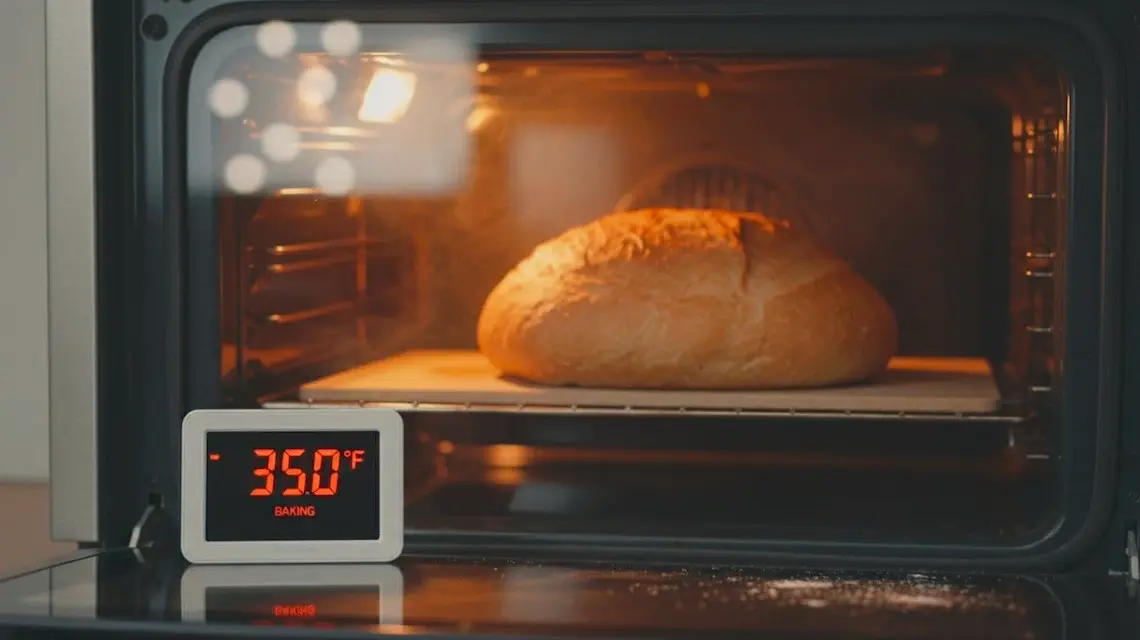

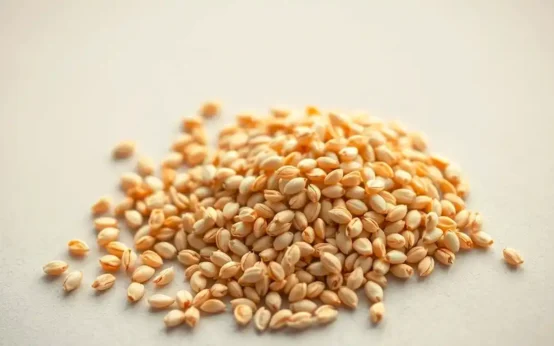 Health Benefit of Sesame Seed
Health Benefit of Sesame Seed 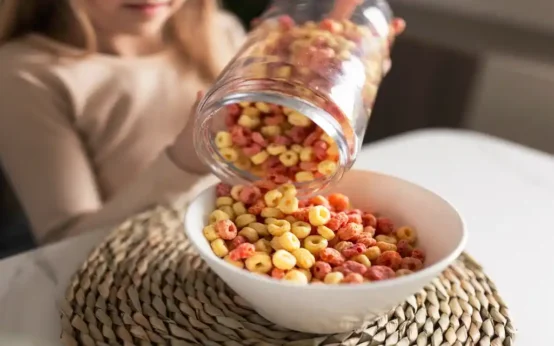 Healthiest Breakfast Cereal for Children
Healthiest Breakfast Cereal for Children 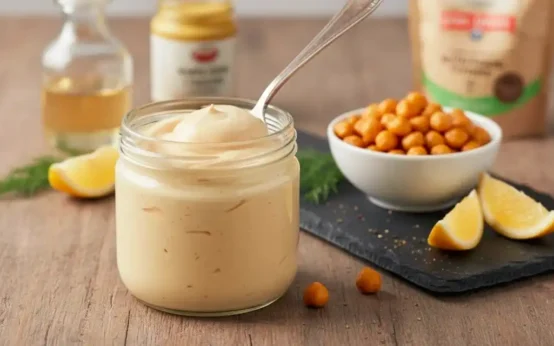 Vegan Oil Free Mayonnaise Recipe
Vegan Oil Free Mayonnaise Recipe  Nutrition to Enhance Athletic Performance
Nutrition to Enhance Athletic Performance 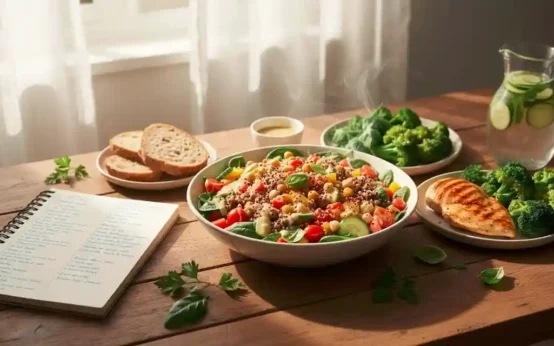 Tasty Healthy Low Cost Meals Recipes
Tasty Healthy Low Cost Meals Recipes 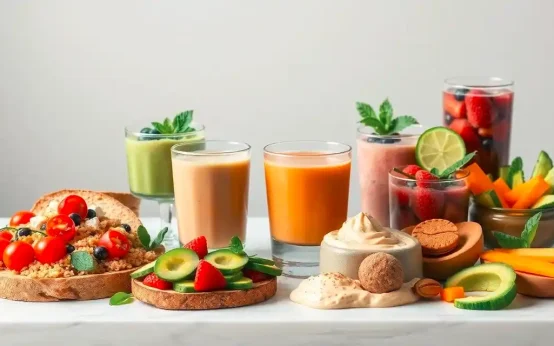 Gluten Free Food Options
Gluten Free Food Options